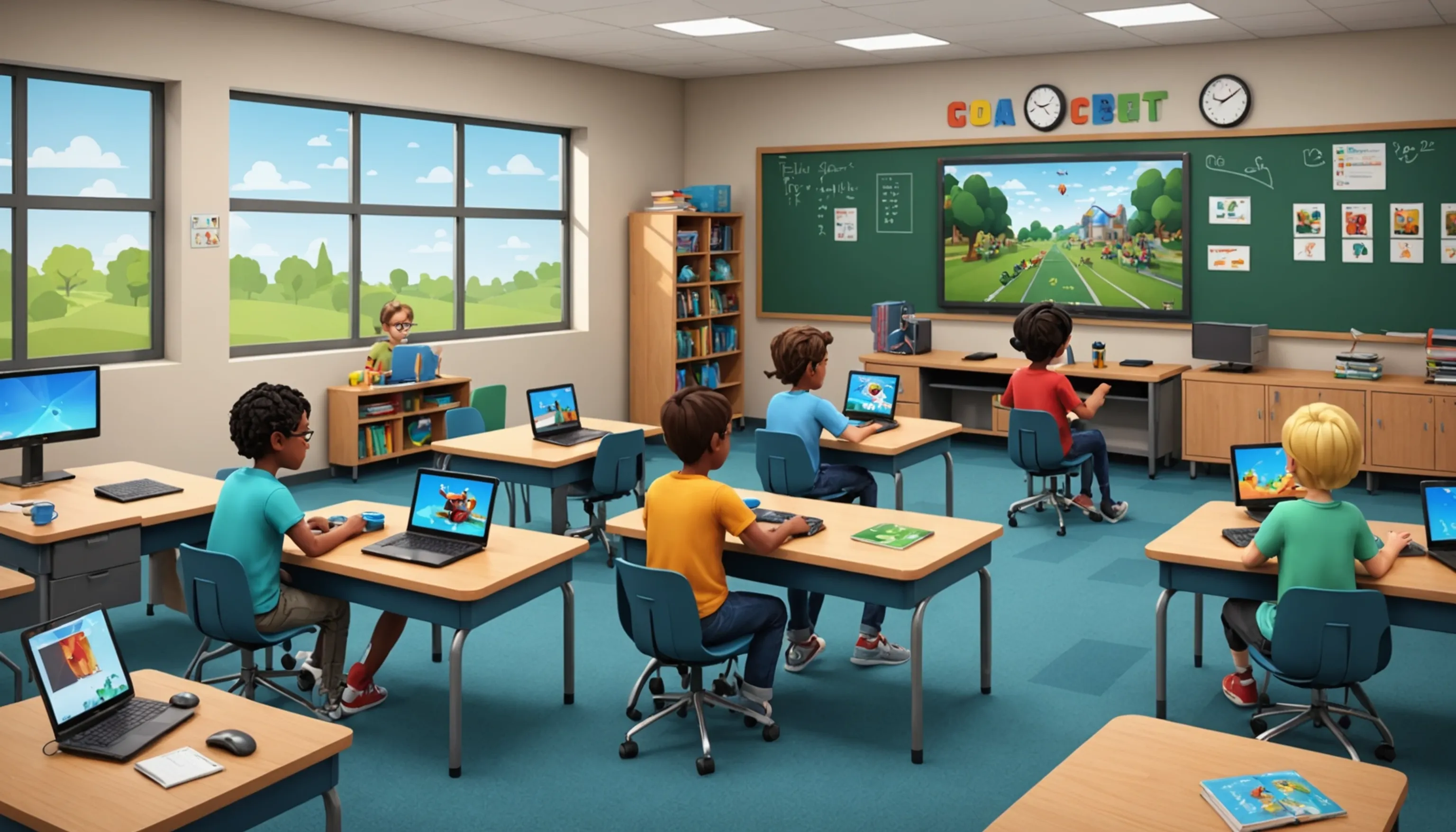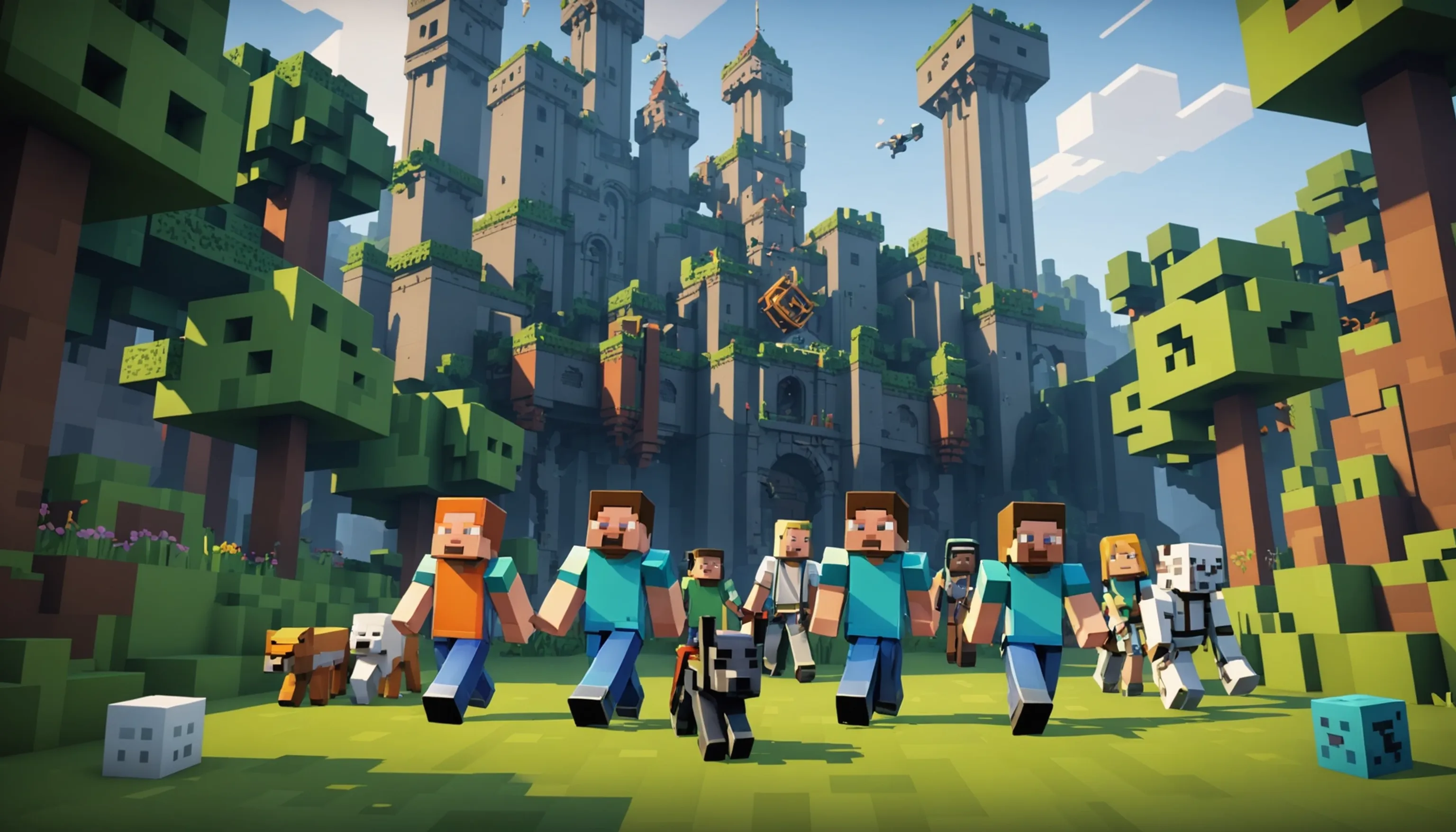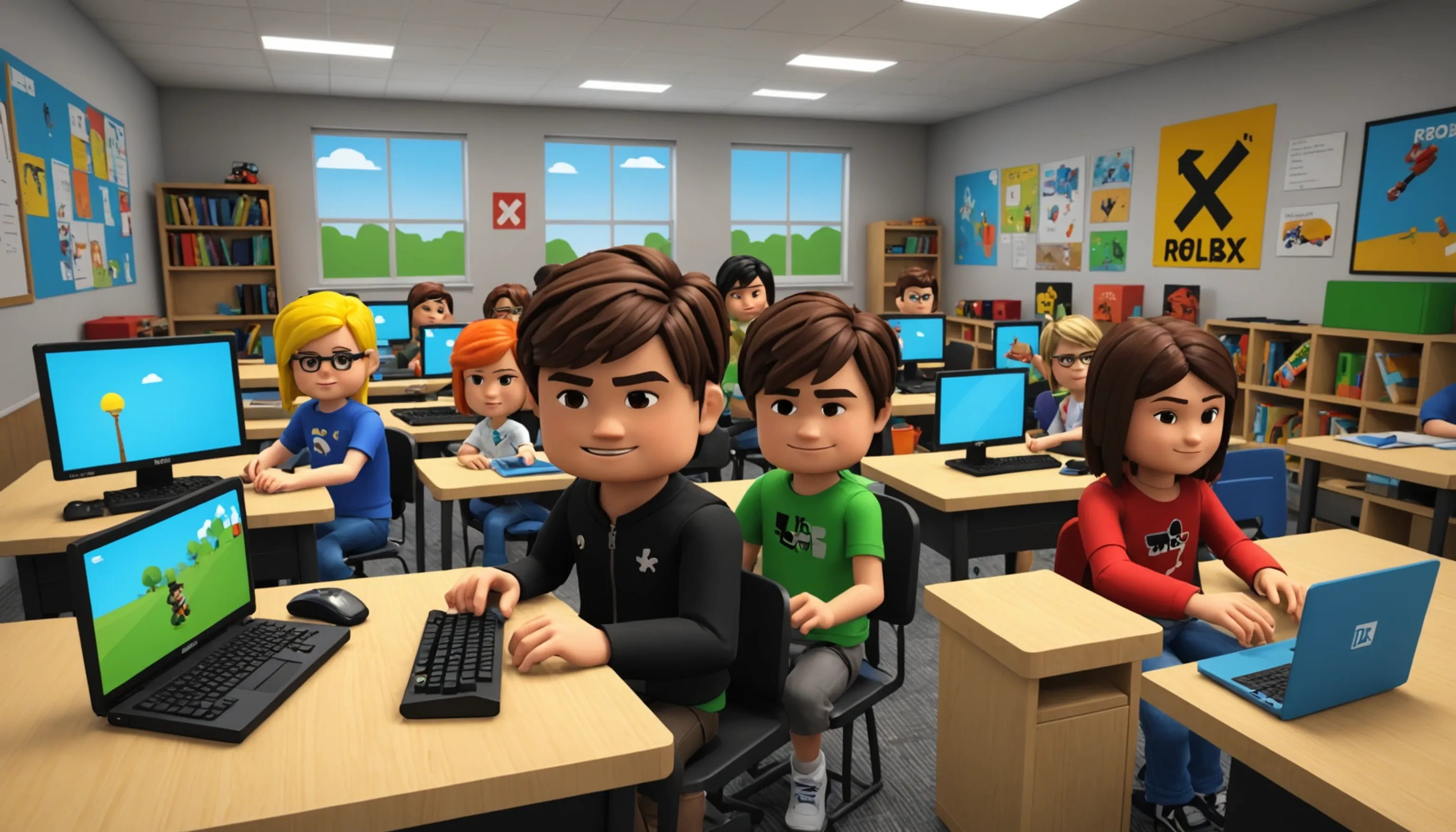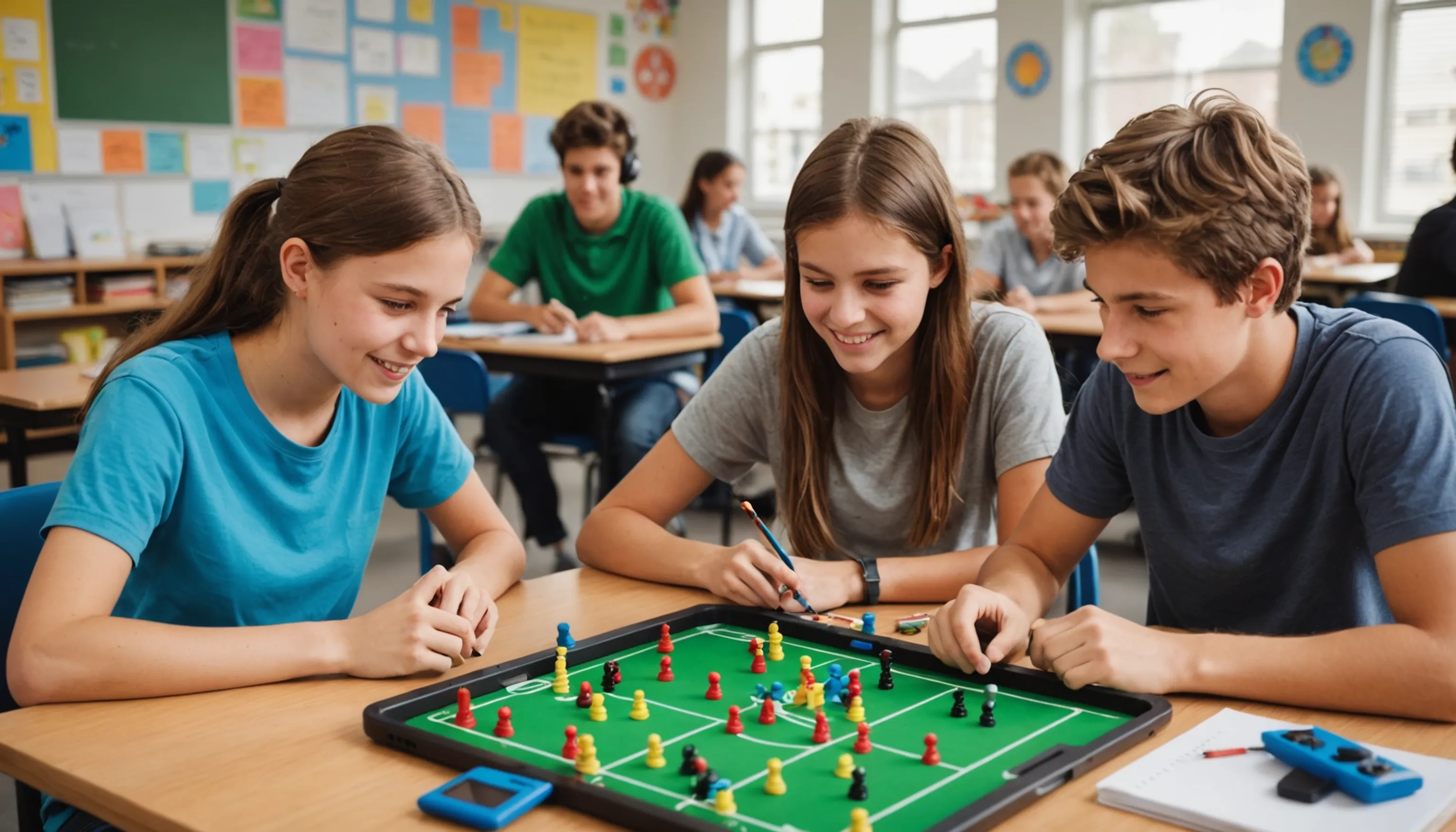Multiplayer Games as Learning Tools
 HvWHenry van Wagenberg
HvWHenry van Wagenberg
Multiplayer Games as Learning Tools
Multiplayer games have emerged as effective learning tools that engage students in an interactive and collaborative environment. These games offer a unique platform for players to work together towards common goals, fostering teamwork and communication skills. Through gameplay, students can explore complex problem-solving scenarios, enhancing their critical thinking abilities.
Moreover, the social aspect of multiplayer games encourages peer learning, as players share knowledge and strategies with one another. This dynamic creates a rich learning experience that goes beyond traditional classroom methods, making education both fun & engaging.
Benefits of Using Multiplayer Games for Learning
Using multiplayer games for learning offers numerous benefits that can significantly enhance the educational experience for students. One of the primary advantages is the increased engagement and motivation that these games provide. Unlike traditional learning methods, multiplayer games create an immersive environment where students are excited to participate and learn.
Additionally, these games promote essential social skills. As players collaborate and communicate to achieve objectives, they develop teamwork, negotiation, and conflict-resolution skills. This social interaction is particularly beneficial for teenagers, who often thrive in collaborative settings.
Another key benefit is the development of critical thinking and problem-solving skills. Many multiplayer games present challenges that require players to think strategically and make decisions under pressure. This helps students learn to analyze situations, weigh their options, and execute plans effectively.
Moreover, multiplayer games can cater to different learning styles. For visual learners, the graphics and gameplay mechanics provide a stimulating experience, while auditory learners can benefit from in-game communication. Kinesthetic learners also thrive as they engage in hands-on activities within the game.
Lastly, multiplayer games can facilitate feedback and assessment. Teachers can easily monitor students' progress and identify areas where they may need additional support, allowing for targeted intervention when necessary. Overall, incorporating multiplayer games into the learning process can create a more dynamic, engaging, and effective educational experience.
How Multiplayer Games Enhance Critical Thinking Skills
Multiplayer games are exceptional tools for enhancing critical thinking skills among players, especially students. These games often require players to navigate complex challenges and make decisions that impact the game's outcome. The dynamic nature of multiplayer environments encourages players to think on their feet, analyze situations quickly, and adapt their strategies in real-time.
One way these games foster critical thinking is through problem-solving scenarios. Players are often presented with puzzles or obstacles that require creative solutions. For instance, in a game like Minecraft, players must gather resources and build structures while considering various factors, such as resource management and spatial awareness. This process encourages logical reasoning and strategic planning.
Furthermore, multiplayer games often involve collaboration with other players. This teamwork necessitates effective communication and negotiation, as players must share ideas and strategies to achieve common goals. Such interactions stimulate analytical thinking as players evaluate the strengths and weaknesses of their teammates and opponents.
Additionally, many multiplayer games include elements of competition, which can further enhance critical thinking. Players must assess their opponents' strategies and anticipate their moves, fostering a deeper understanding of tactical thinking.
In summary, multiplayer games provide a rich platform for developing critical thinking skills through problem-solving, collaboration, and competition. By engaging in these activities, students not only learn to think critically but also gain valuable skills that are applicable in real-world situations.

Examples of Educational Multiplayer Games
There are several outstanding educational multiplayer games that effectively combine fun with learning. One notable example is Minecraft: Education Edition, which allows students to explore creativity while learning about subjects like math, science, and history through building and exploration. Another popular game is Portal 2: Peer Review, which challenges players to solve puzzles using physics concepts, promoting logical reasoning and teamwork. Additionally, Roblox encourages learning through game creation, allowing students to develop coding skills and collaborate on projects. These games provide engaging platforms for students to learn essential skills in an interactive environment.
Minecraft: Education Edition
Minecraft: Education Edition is a powerful educational tool that transforms the popular sandbox game into a rich learning experience for students. Designed specifically for classroom use, this version of Minecraft allows educators to engage students in various subjects, including science, mathematics, history, and even language arts.
One of the standout features of Minecraft: Education Edition is its ability to foster creativity and critical thinking. Students can build and explore intricate worlds, which encourages them to think outside the box. For example, they can recreate historical landmarks or experiment with scientific concepts by simulating ecosystems and chemical reactions within the game environment.
The game also promotes collaboration and teamwork. Educators can assign group projects where students work together to complete challenges or build structures. This not only enhances their problem-solving skills but also teaches them valuable lessons in communication and negotiation.
Moreover, Minecraft: Education Edition comes equipped with a variety of educational resources, including lesson plans and tutorials that help teachers integrate the game into their curriculum effectively. The platform also includes a safe, controlled environment where students can interact without the distractions or risks often associated with online gaming.
In summary, Minecraft: Education Edition is more than just a game; it's a versatile educational platform that engages students in meaningful learning experiences while fostering essential skills like creativity, collaboration, and critical thinking.
Portal 2: Peer Review
Portal 2: Peer Review is an innovative educational game that builds on the original Portal 2's mechanics to enhance learning through collaboration and critical thinking. This multiplayer expansion introduces a unique puzzle-solving experience that challenges players to navigate complex levels using physics-based mechanics, emphasizing logical reasoning and teamwork.
The game encourages players to think creatively as they manipulate portals to solve intricate puzzles. Each challenge requires players to analyze their surroundings, plan their moves, and communicate effectively with teammates to progress. This aspect of the game fosters collaboration and enhances problem-solving skills, making it an excellent choice for classrooms.
One of the key benefits of Portal 2: Peer Review is its ability to engage students in STEM (Science, Technology, Engineering, and Mathematics) concepts. As players work through the game's physics-based puzzles, they gain a deeper understanding of important principles such as momentum, energy conservation, and spatial reasoning. This hands-on approach to learning can be particularly beneficial for students who may struggle with traditional teaching methods.
Moreover, the game encourages a growth mindset, as players learn to embrace failure as part of the problem-solving process. With each failed attempt, they gain insights that lead to eventual success, reinforcing perseverance and resilience.
In summary, Portal 2: Peer Review is not just an entertaining game; it's a powerful educational tool that effectively combines fun and learning, promoting critical thinking and collaboration in an engaging way.

Roblox: Learning Through Creation
Roblox is a unique platform that allows users to create and share their own games, making it an exceptional tool for learning through creation. This multiplayer game encourages creativity, coding, and problem-solving, making it an engaging way for students to develop essential skills.
One of the standout features of Roblox is its user-friendly game development environment, which enables players to design their own games using Roblox Studio. This platform provides students with the opportunity to learn programming concepts and game design principles in a hands-on manner. By creating their own games, students not only enhance their coding skills but also learn about project management and iterative design.
Moreover, Roblox fosters collaboration and community engagement. Students can work together on projects, share their creations, and provide feedback to one another. This collaborative aspect promotes teamwork and communication skills, as players must articulate their ideas and work towards common goals.
Roblox also offers educational resources, such as tutorials and workshops, to help students and teachers maximize their learning experience. These resources guide users through the process of game development, allowing them to grasp complex concepts at their own pace.
In summary, Roblox serves as a powerful educational tool that combines creativity, collaboration, and coding. By learning through creation, students gain valuable skills that are applicable in various fields, preparing them for future careers in technology and design.
Tips for Parents and Teachers
Here are some valuable tips for parents and teachers to effectively incorporate multiplayer games into the learning process:
- Set Clear Objectives: Define specific educational goals for using games, ensuring they align with curriculum standards.
- Choose Age-Appropriate Games: Select games that suit the developmental levels and interests of your students, ensuring they provide meaningful learning experiences.
- Encourage Collaboration: Promote teamwork by assigning group projects within games, fostering communication and problem-solving skills.
- Establish Boundaries: Set limits on gaming time to ensure a healthy balance between gaming and other educational activities.
- Discuss Game Content: Engage students in discussions about what they learn from the games, reinforcing critical thinking and reflection.
- Monitor Progress: Regularly check in on students’ engagement and understanding, providing support when necessary.
By following these tips, parents and teachers can effectively utilize multiplayer games as powerful educational tools.
Setting Boundaries for Gaming Time
Setting boundaries for gaming time is crucial for maintaining a healthy balance between education and leisure, especially when incorporating multiplayer games into the learning experience. Here are some effective strategies for parents and teachers to consider:
First, establish a clear gaming schedule. Designate specific times for gaming, ensuring that it does not interfere with homework, chores, or family time. This helps students understand that gaming is a privilege that comes after responsibilities are met.
Second, create a time limit for gaming sessions. Depending on the age of the child, one to two hours per session is often sufficient. Using timers or alarms can help signal when it's time to wrap up and move on to other activities.
In addition, encourage regular breaks during gaming sessions. Short breaks can help reduce fatigue and improve focus, allowing players to return to the game with renewed energy and concentration.
Another important aspect is to engage in discussions about the content and purpose of the games. This not only reinforces the educational aspect but also helps students reflect on their gaming habits.
Lastly, model healthy gaming behavior as an adult. Show your children how to enjoy gaming responsibly, balancing it with other interests and activities. By setting these boundaries, parents and teachers can ensure that gaming remains a positive and enriching experience.
Choosing Age-Appropriate Games
Choosing age-appropriate games is essential for maximizing the educational benefits of multiplayer gaming while ensuring a safe and enjoyable experience for students. Here are some effective strategies for parents and teachers to consider when selecting games for their children:
First, familiarize yourself with the age ratings assigned to games. Organizations like the Entertainment Software Rating Board (ESRB) provide guidelines that categorize games based on their content. Look for games that match the developmental stage and maturity of the player.
Second, consider the educational value of the game. Look for titles that promote critical thinking, creativity, and problem-solving skills. Games like Minecraft: Education Edition and Roblox not only entertain but also encourage learning in various subjects.
Engage with the games yourself or read reviews from reputable sources to understand their content and mechanics. This helps ensure that the game aligns with your educational goals and values.
Additionally, involve your children in the selection process. Discuss what interests them and why they want to play certain games. This not only empowers them but also provides an opportunity for parents to guide their choices.
Lastly, regularly revisit and reassess the games your children play. As they grow and develop new skills, their gaming needs and preferences may change. By choosing age-appropriate games, parents and teachers can create a positive gaming environment that enhances learning and growth.
Encouraging Collaboration and Discussion
Encouraging collaboration and discussion around multiplayer games can significantly enhance the educational value of gaming experiences for students. Here are several strategies for parents and teachers to foster a collaborative learning environment through gaming:
First, create opportunities for students to work together on in-game tasks. Many multiplayer games require teamwork to achieve objectives, which naturally cultivates communication skills and fosters a sense of community. Assign group projects within the game where students must collaborate to build, solve puzzles, or complete challenges.
Second, facilitate discussions before and after gaming sessions. Before gameplay, outline the learning objectives and expectations. Afterward, encourage students to share their experiences, strategies, and insights gained during the game. This reflection can deepen understanding and reinforce the educational content.
Utilize online forums or chat features within the games to promote discussion. This allows students to communicate with peers, share tips, and discuss challenges they face in the game, which enhances teamwork and camaraderie.
In addition, organize gaming clubs or study groups where students can play together and discuss their experiences. This encourages a culture of collaboration and learning outside the traditional classroom setting.
Lastly, model collaborative behavior by participating in gameplay with students. This not only provides guidance but also demonstrates the importance of teamwork and communication. By encouraging collaboration and discussion, parents and teachers can transform multiplayer gaming into a powerful educational tool that enhances critical skills and fosters community.
